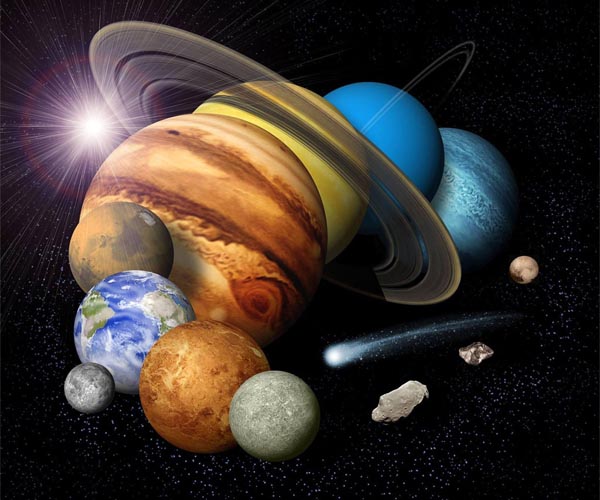Astrology in the Space Age: How Our Birth Charts Might Evolve with Interplanetary Living
by Clarence Oxford
Los Angeles CA (SPX) May 21, 2025
As we become multi-planetary as a species, with ambitious Mars colonizing and lunar settlement efforts already well underway, we must consider how this push into space will upset one of our most enduring interpretive systems: astrology. The birth chart, calculated for so long from the Earth-centric perspective, is unprecedentedly challenged when we consider human existence beyond our planet. This is not a question of technical adjustment, but an entirely new conceptualization of how celestial energies could affect human awareness on other planets.
The Foundation of Geocentric Birth Charts
Classic birth chart interpretation is purely of an Earth-based viewpoint, charting the path of celestial bodies from the surface of our world at the moment of birth. This geocentric system has been the basis for astrology for thousands of years, with the Moon ruling over emotions and instincts, Mars ruling over ambition and action, and Venus ruling over love and harmony. If you would like to know your own birth chart at the time, you can check an online birth chart calculator or visit sites such as https://asknebula.com/charts/birth-chart, where you can get earth-based calculations for deeper insight into your personality, life issues, and karmic patterns.
Mathematical precision in all such calculations comes from the accurate coordinates of latitude and longitude on the surface of the Earth. The position of each planet relative to the zodiac signs and the twelve houses gives each individual an astrological fingerprint that astrologers use to decode an individual’s cosmic blueprint. All this, however, comes from the presumption of human birth and experience of life in the gravitational field of the Earth and atmospheric conditions.
Mars-Born Humans and Planetary Perspective Shifts
Birth charts for individuals born under the influence of Mars will require a complete reorientation of perspective, shifting from an Earth-focused point of view to a Martian framework. This is due to the fact that a Martian day is 24 hours and 37 minutes long-a bit more than Earth’s rotation-posing the question of precise timing calculations to generate legitimate astrological charts. Mars’ position in orbit also means Earth would be a visible celestial body in such charts, totally reconfiguring the traditional planetary order that has been the basis of astrological interpretation for centuries.
Mars is classically associated with action, bravery, and pioneering in terrestrial astrology. However, Mars-born individuals may have an enhanced sensibility of Martian traits such as tenacity, survival, and technology. The reddish color of the planet, tinted by iron oxide, symbolically represents blood and fire, and thus Mars-born individuals may have more assertive and dynamic tendencies. This new astrological understanding highlights how life on different planets may transform our cosmic identity.
Lunar Settlements and Tidal Consciousness
Moon-based communities pose equally intriguing astrological issues, since inhabitants would have highly varied connections to the Earth’s satellite. The Moon has long been associated with emotions, intuition, and unconscious habits in Earth astrology. Human beings born and living on the Moon could develop more advanced lunar sensitivities, with more direct access to emotional tides and cyclical perception that Earth-dwelling human beings can only approximate.
Moon gravity, at about 16% of Earth’s, is a domain where the physical body operates under totally different conditions. Such decreased gravitational force can intensify the Moon’s long-standing associations with fluidity, flexibility, and emotional sensitivity. Lunar individuals can become more highly evolved in intuitive skills and sensitivity to the subconscious planes, as normal experience would consist of living in a low-gravity world that requires continual spatial and emotional readjustment.
Zero Gravity Environments and Floating Consciousness
Space stations and zero-gravity orbital habitats are the most radical deviations from normal astrological conditions. Without the anchoring influence of planetary gravity, human consciousness might produce new patterns of connection with celestial forces. The absence of directional sense in weightless space can eliminate traditional correlations between “above” and “below” that have conditioned astrological meaning over the ages.
Those who are born within rotating space habitats that simulate the effect of gravity through the application of centrifugal force would experience artificial gravitational forces with no connection to any existing natural planetary body. Their birth charts could require the use of new systems of calculation that acknowledge the artificial nature of their gravitational field but continue to utilize the positions of natural celestial bodies throughout the solar system.
Technological Integration and Cosmic Connectivity
Next-generation space habitats of the advanced kind will probably be equipped with sophisticated astronomical observation technology, which may provide residents with unparalleled cosmic awareness of planetary movement and cosmic phenomena. Such enhanced cosmic awareness will probably translate into more vivid and present-moment astrological practice, where individuals are cognizant of present planetary transits and their possible effect on life and decision-making at all times.
Interplanetary communication networks might deliver novel forms of cooperative astrological analysis, where astrologers from different worlds share data and develop composite calculation algorithms that account for simultaneous planetary viewpoints. Such technological advances may lead to completely new forms of astrology that combine earth-based traditional knowledge with space-age empirical information.
The potential for travel between gravitational environments would create astrological nomads whose astrological influences change with the position of the solar system. They would have adaptive astrological personalities that are adjusted to their immediate cosmic environment but with underlying personality patterns established at birth staying intact.
Conclusion
As humankind extends further into the solar system, astrological interpretation will probably be an ever more sophisticated system that respects multiple planetary viewpoints and gravitational forces. Birth charts could be three-dimensional representations that take into account the individual cosmic setting while still being linked to the older terrestrial understanding. This combination of ancient wisdom and space-age technology could be the beginning of a new chapter in humanity’s long-standing search for our place in the universe by following the movements of celestial bodies.
Related Links
Birth Chart Calculator
Understanding Time and Space

